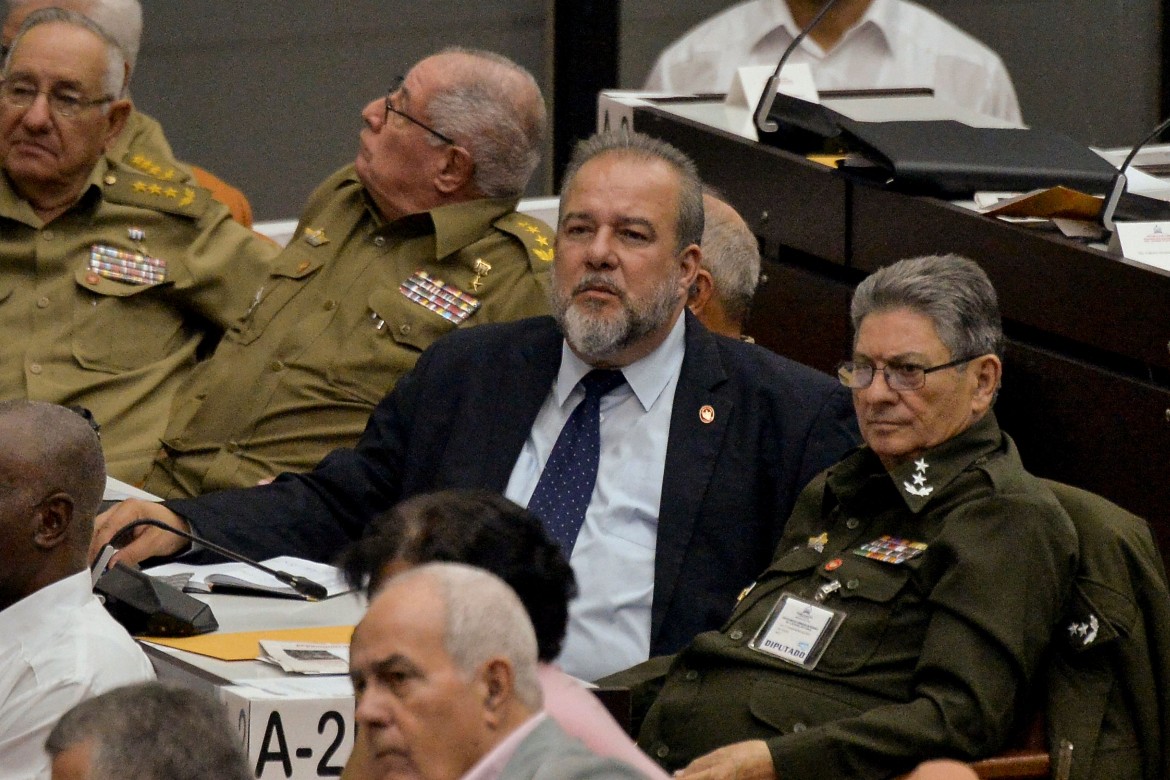Analysis
New Cuban cabinet mixes old and new guard, revives role of prime minister
Manuel Marrero Cruz, 56, is the same generation as the Cuban president, a technocrat tapped to lead the government into the 21st century economy while combating the rise of US imperialism in Latin America.

After his nomination by Cuban President Miguel Díaz-Canel, Manuel Marrero Cruz was installed as Prime Minister on Saturday by the National Assembly of the Poder Popular (Cuba’s single-chamber parliament). This was a fulfilment of the mandate of the new constitution, approved by referendum in April, which envisaged restoring the office of Prime Minister, abolished by the 1976 constitution. At that time, the office was held by Fidel Castro, who then assumed the presidency of both the Republic and the Council of Ministers.
Marrero’s nomination came as a surprise to many analysts, making it clear that the Cuban leadership had tapped a technocrat educated under the principles of Fidel Castro himself. Marrero is 56 years old, an architect, and has been Minister of Tourism since 2004. He has also been the head of the Gaviota group, one of the largest tourist corporations on the island, managed by the Revolutionary Armed Forces. As Díaz-Canel highlighted on the occasion of his nomination, Marrero’s merits include the fact that he has successfully managed one of the main engines of the Cuban economy while maintaining harmony with the military.
This position “has allowed him to earn great experience in international negotiations”—while remaining in tune with the policies of the top brass of the Communist Party and of the former lider maximo, Fidel Castro.
Over the next five years, Marrero will work alongside the President of the Republic to govern the country, and will have the power to “designate or replace officials and directors” in the state administration, as well as to oversee the activity of the governors of the provinces (another post created by the new constitution).
He will be assisted by a deputy prime minister in the person of “Commander” Ramiro Valdéz, an 87-year-old veteran of the Revolution, and economists Ricardo Cabrisas, 83, and Jorge Luis Tapia, 55. The new government is a mixture of the old and new guard of the Communist Party.
The separation of powers, between the political—reserved for Díaz-Canel and Parliament—and the executive-administrative branch, represents a new step in the direction of the “modernization of Cuban socialism” initiated by former President Raúl Castro. However, according to Cuban academic Arturo Lopez-Levy, this is still a “functional separation of powers within the socialist concept of political unity” of the people, which is represented by the leadership of the single party, the Cuban Communist Party led by Raúl Castro.
Most importantly, the process that began on Saturday is a new and decisive phase in the transmission of power to the representatives of a new generation, born after the triumph of the 1959 Revolution. During the one year and eight months of Díaz-Canel’s presidency, a large part of the Council of Ministers has been replaced with new faces.
The appointments of new ministers confirmed this trend. In particular, they marked the departures of some of the generals who worked for the previous president, Raúl Castro, in his government. On the other hand, the “historical figure” of General Leopoldo Cintra Frías stayed on as Minister of the Armed Forces, as well as Julio César Gandarilla as Interior Minister. However, the new Prime Minister, as well as the key ministerial posts—such as that of Economy and Finance Minister Alejandro Gil—are now occupied by figures belonging to the same generation as the president.
The new Cuban leadership will have to give political substance to this difficult generational transition by addressing the key political, economic and social issues that the new Constitution has identified, and which the new government will have to translate into laws according to an organizational chart that was approved on Saturday by the National Assembly.
First of all, economic issues will be on the agenda, with a new law on businesses which is expected to launch a process of reform and enlivening of Cuban socialism by finding “a balance between planning and flexibility and the market,” approving forms of juridical personhood for the newly recognized forms of property: cooperatives (social ownership) and small businesses (private property). Some of the strategic sectors identified for this phase are the social communication sectors (printed media and social networks), in order to ensure greater transparency and participation of civil society, the new family code addressing gender issues, education and the environment.
As Díaz-Canel said in his concluding speech at the end of the parliamentary session, this new phase of Cuban socialism coincides with—and will have to face up to—an extremely aggressive policy being pursued by the Trump administration, which has reaffirmed the Monroe doctrine as the cornerstone of its imperialistic policy toward Latin America. This policy openly involves overthrowing the socialist governments of Venezuela and Cuba and strengthening the governments of the Latin American right and their neoliberal policies.
Cuba is determined to remain at the forefront among those who are resisting this neocolonial policy, and to provide support for the popular struggles underway in various countries in South America, in order to fight the most dramatic consequences of neoliberalism: inequality, the exponential increase in poverty and the restriction of democratic freedoms.
Originally published at https://ilmanifesto.it/un-mix-di-vecchia-e-nuova-guardia-la-sfida-di-cuba-allimpero-prosegue/ on 2019-12-22
